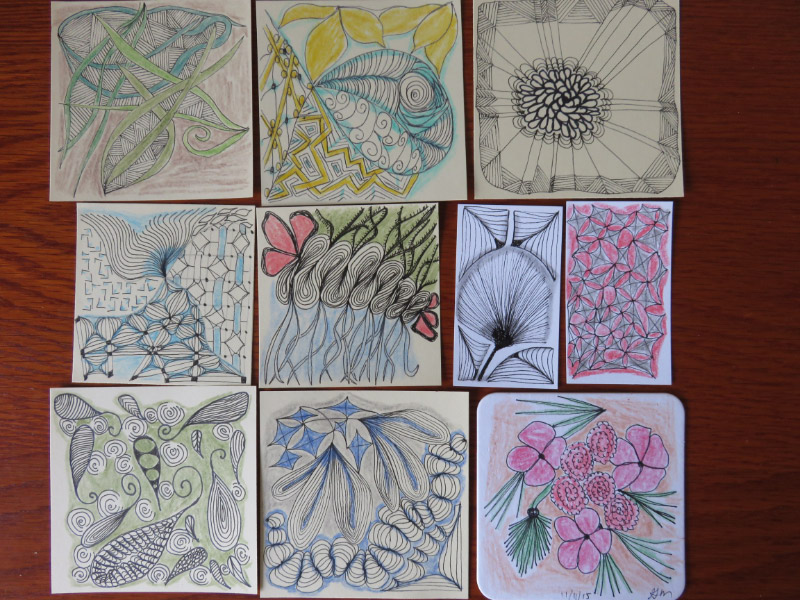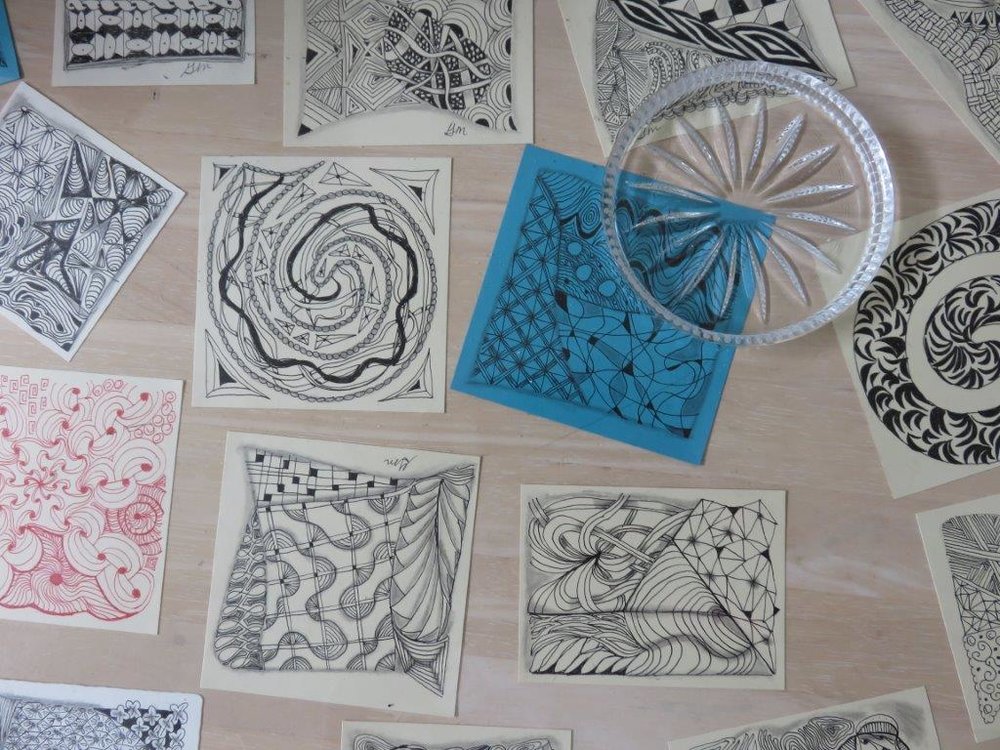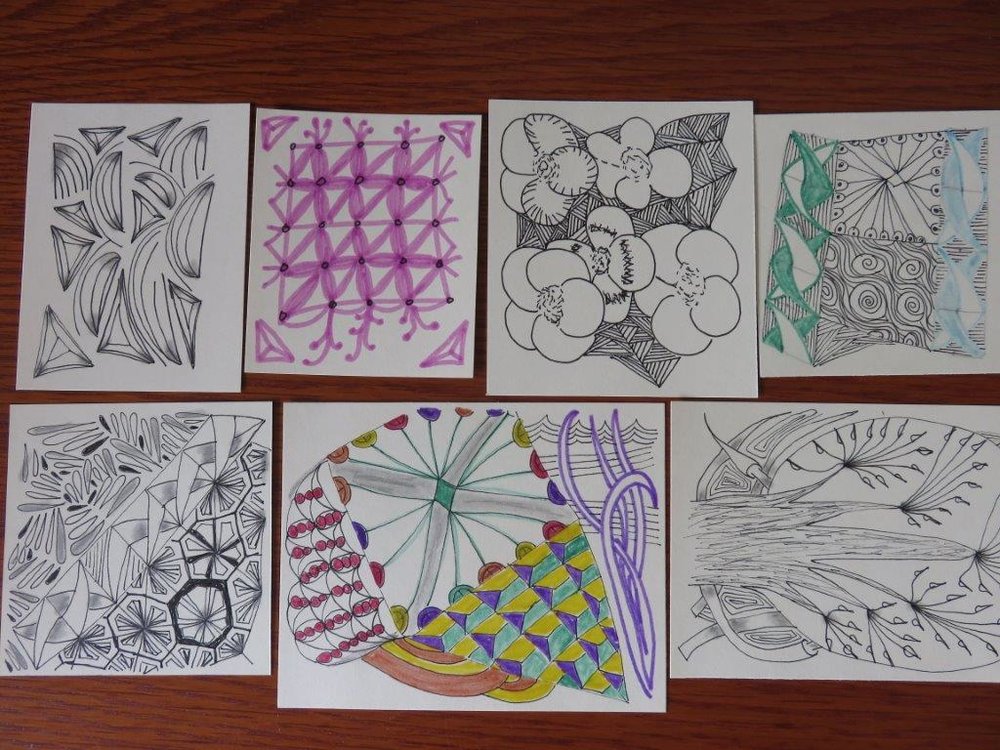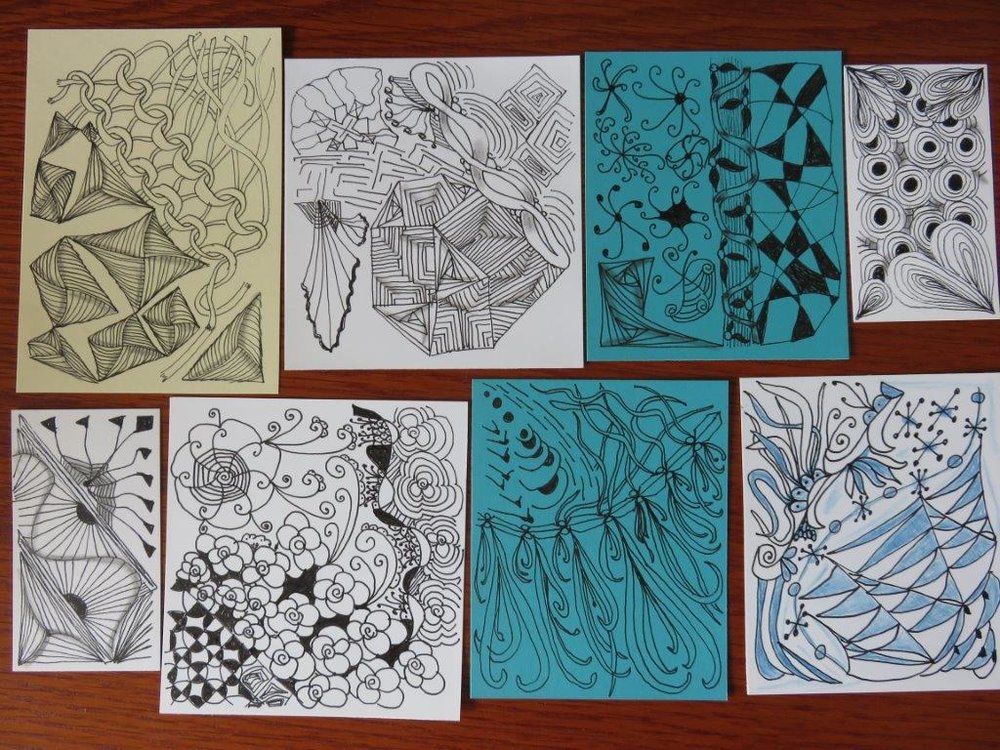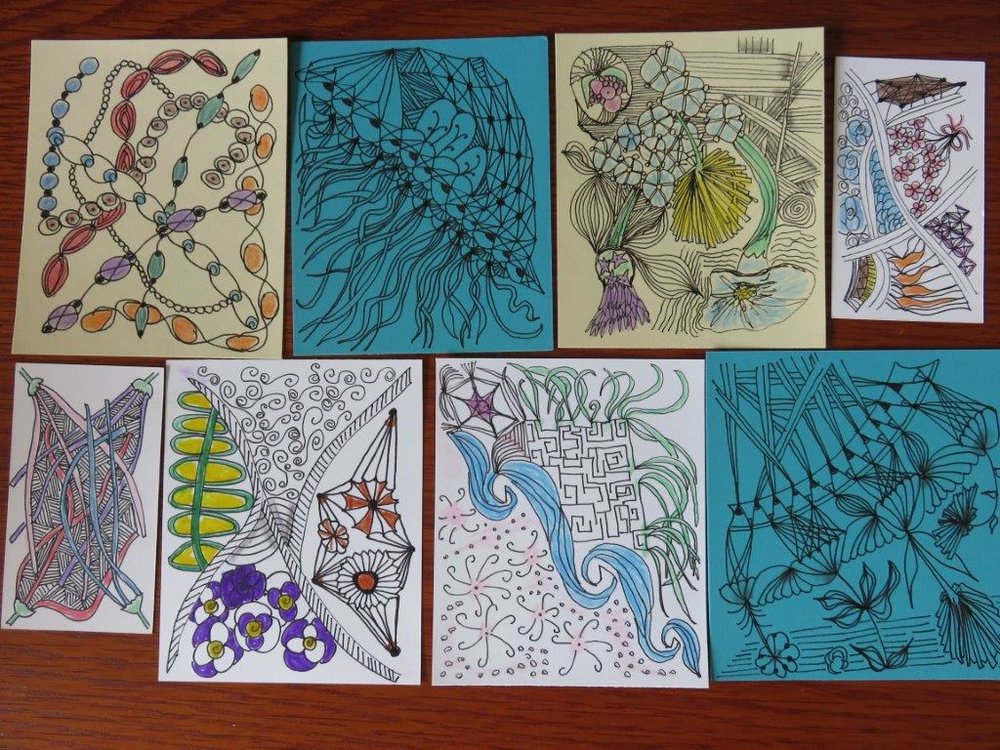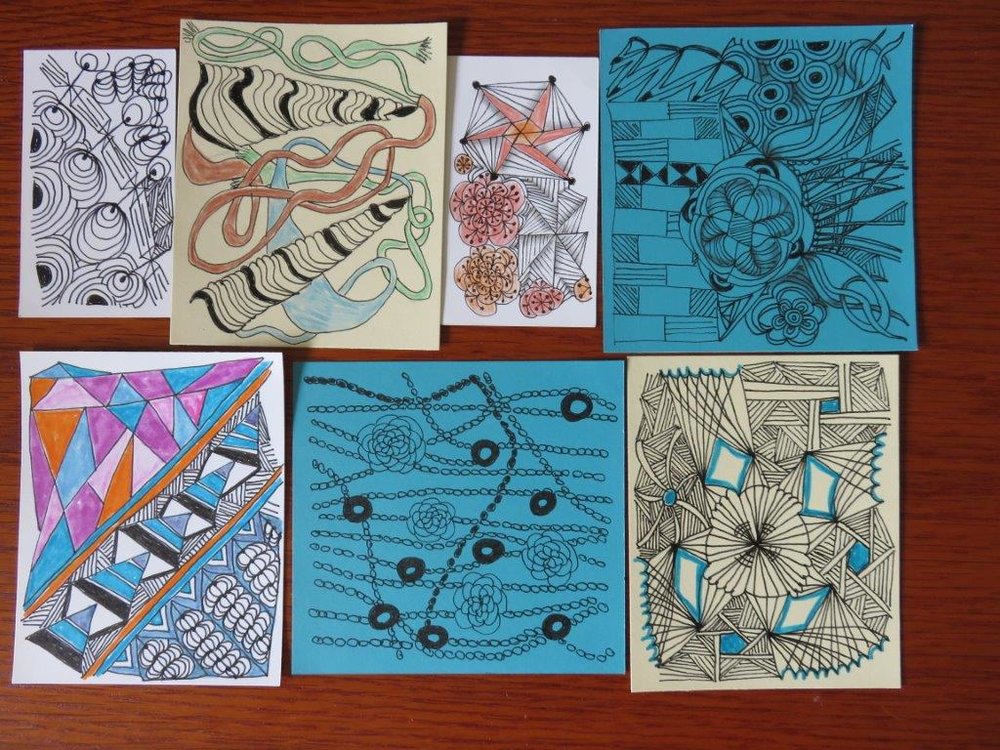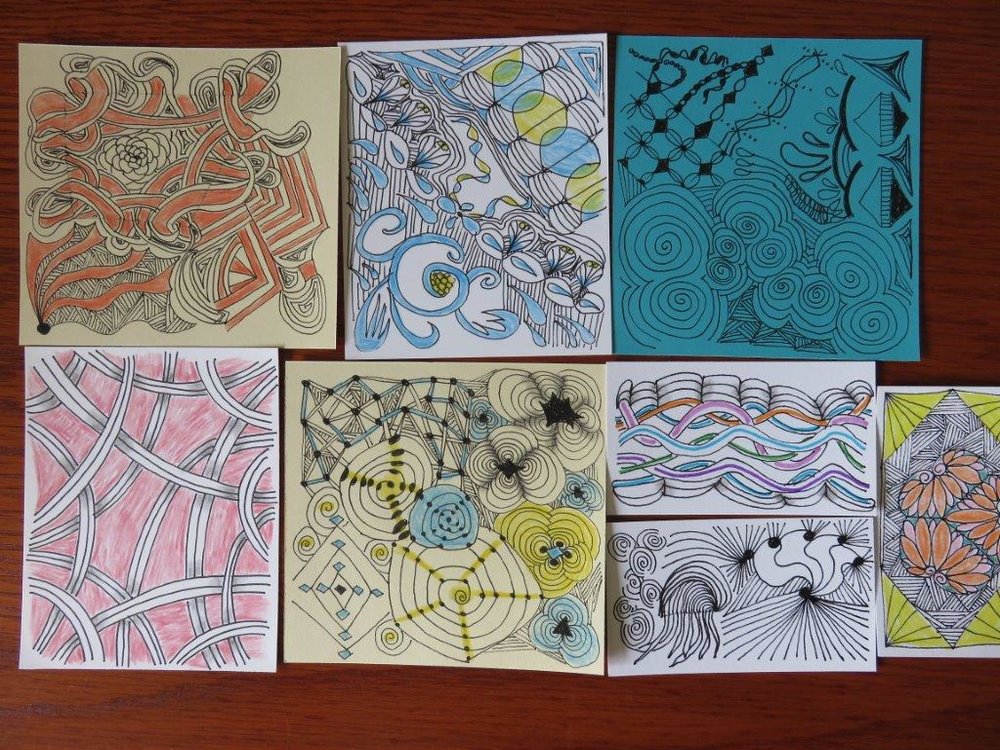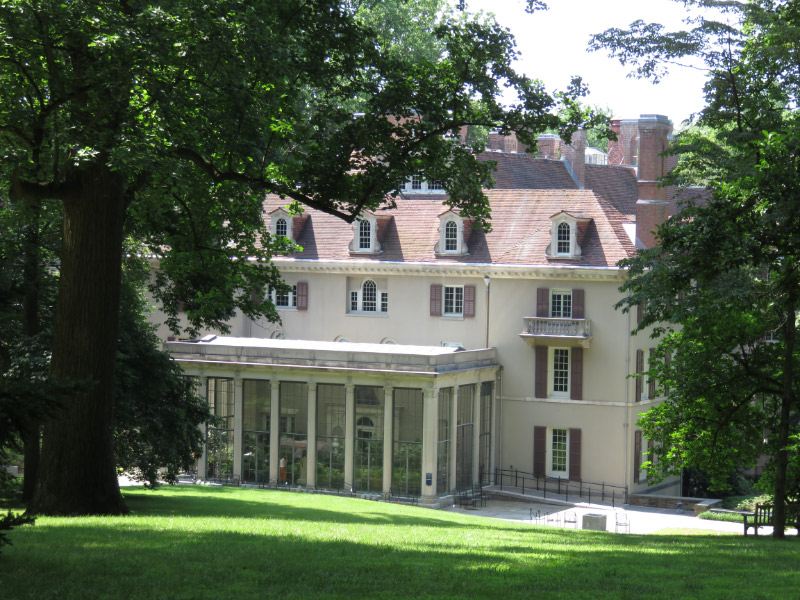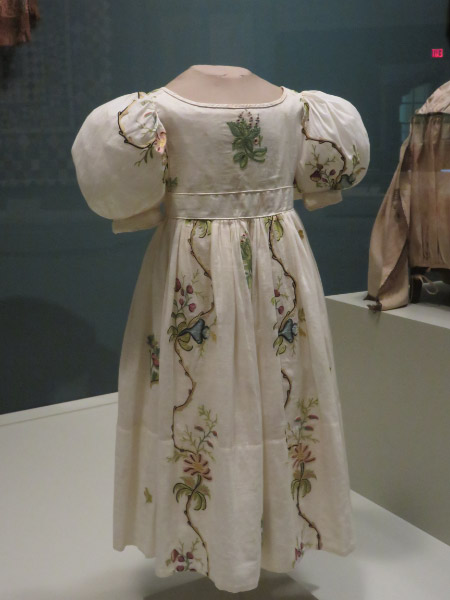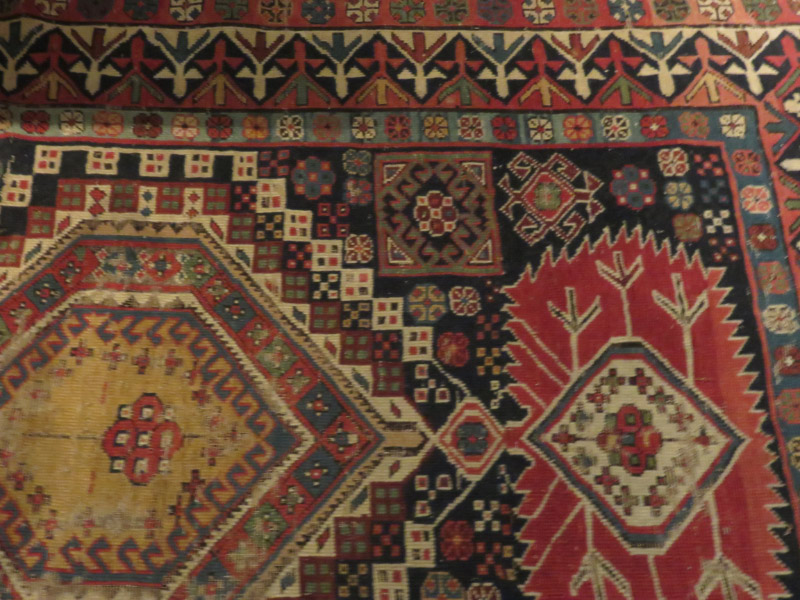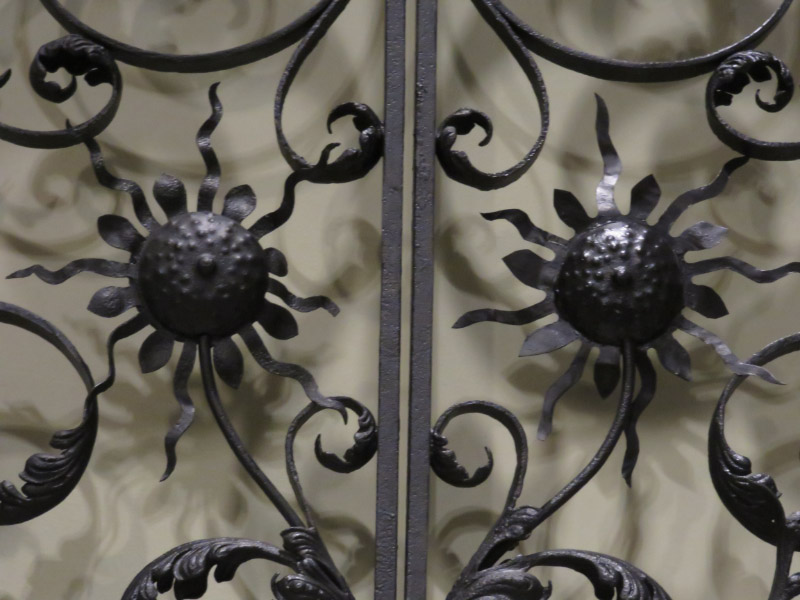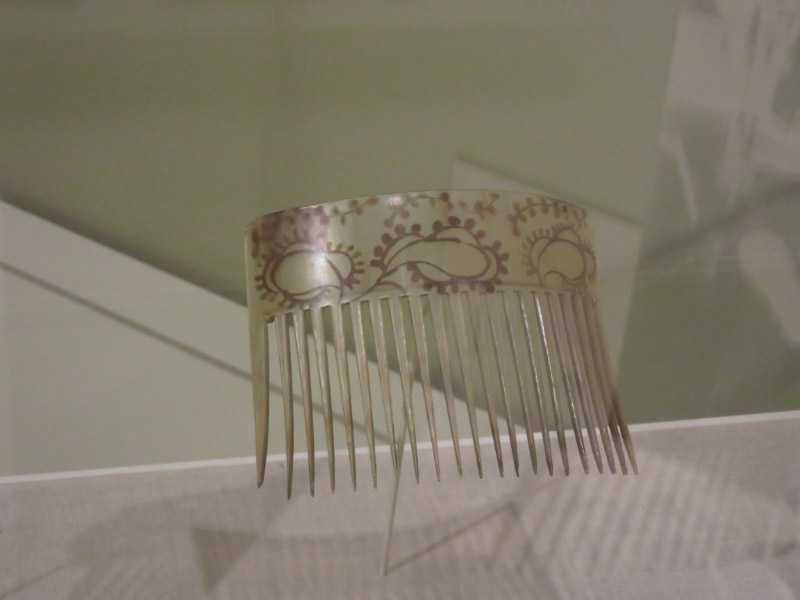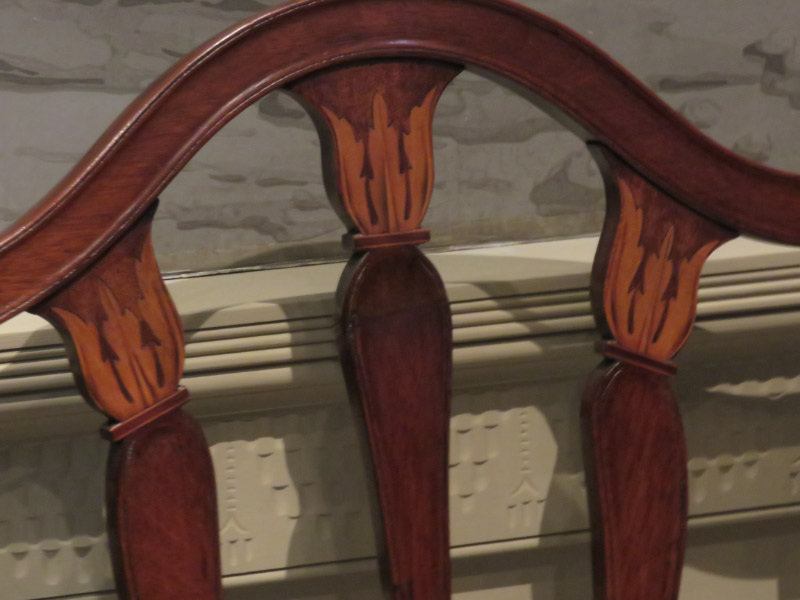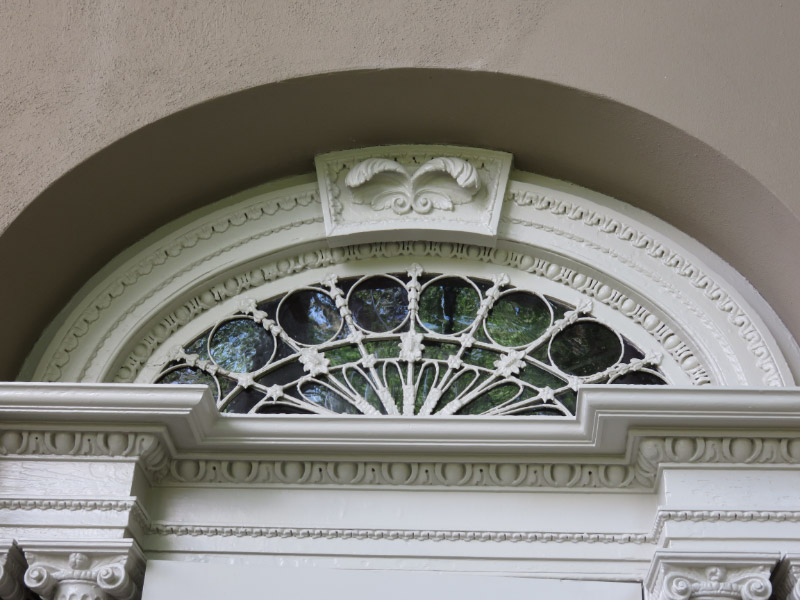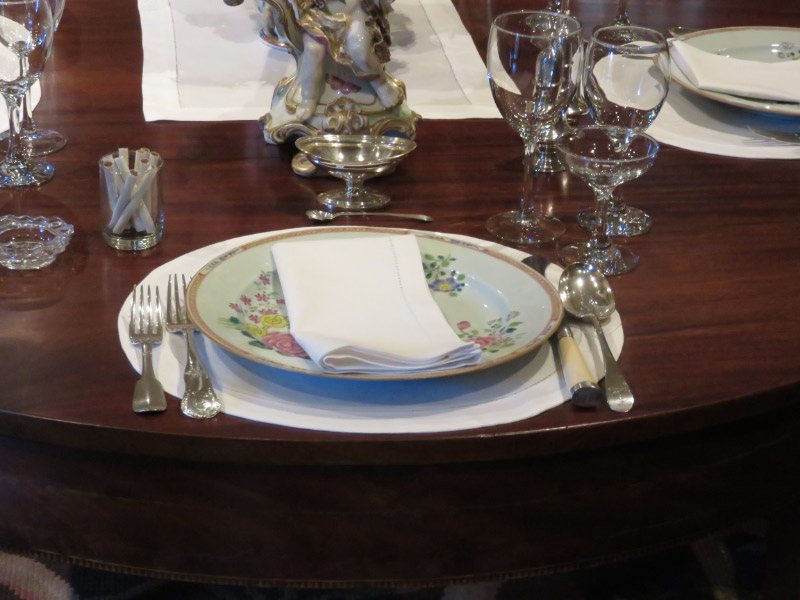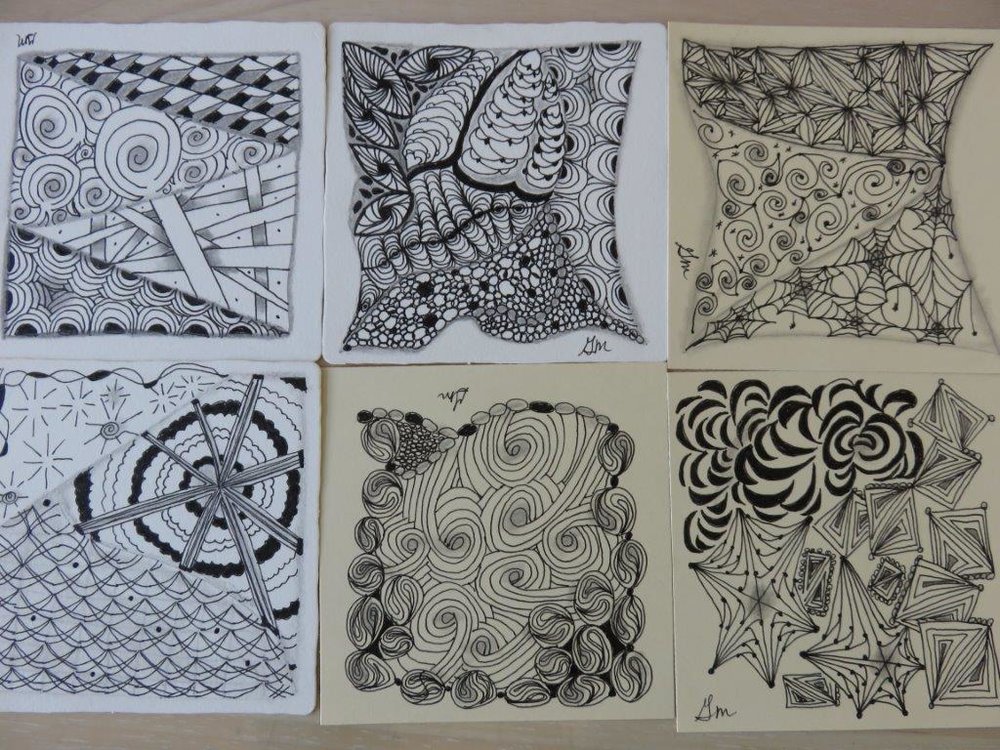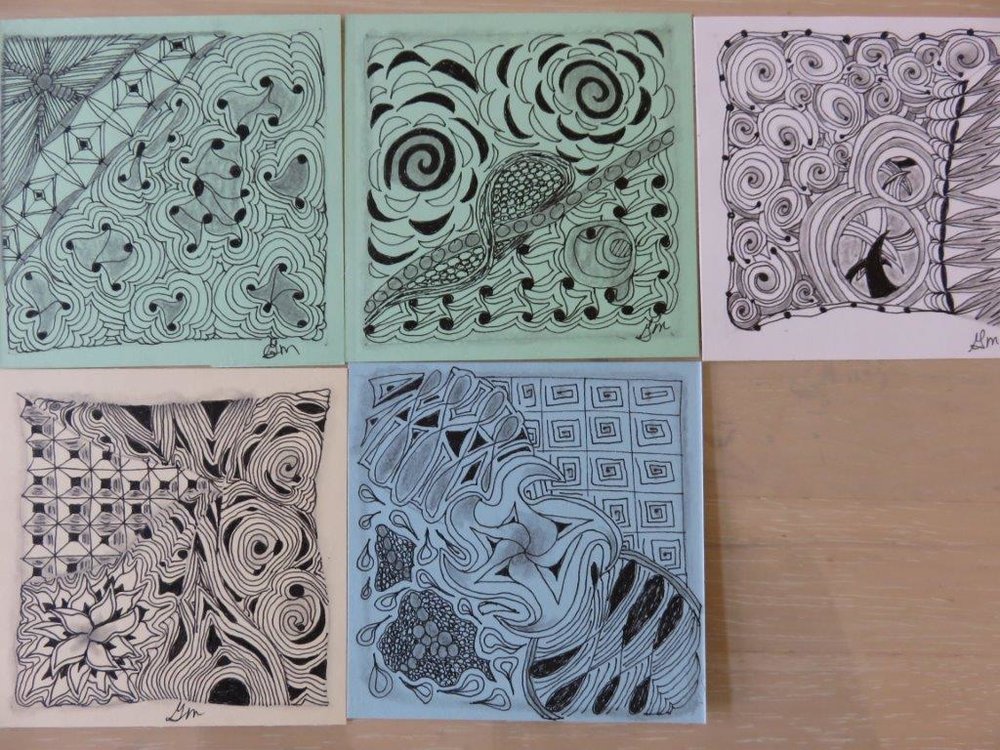The Zentangle habit is one that I even take on vacation! There is always enough room for tiles, a pen, a pencil, and tortillion!
Toward the beginning of the month I started experimenting with the patterns on soft drink bottles. My rationale was that making patterns on a curved surface rather than a flat tile would take some practice and I was considering making spherical Christmas ornaments for our tree this year; in the meantime, the decorated bottles could hold water for when I was hiking. I bought an ultra-fine point Sharpie. The ink did indeed stick to the plastic although I discovered that any residual oils (like from fingerprints) caused it to wear off. I also discovered that it pooled a bit if I didn’t pick up the pen fast enough so continuous line patterns were preferable. I am not back to tiles…and thinking of ornaments made out of paper coaster material – hanging diagonally ….I’ll have so of my early test tiles later in this post.
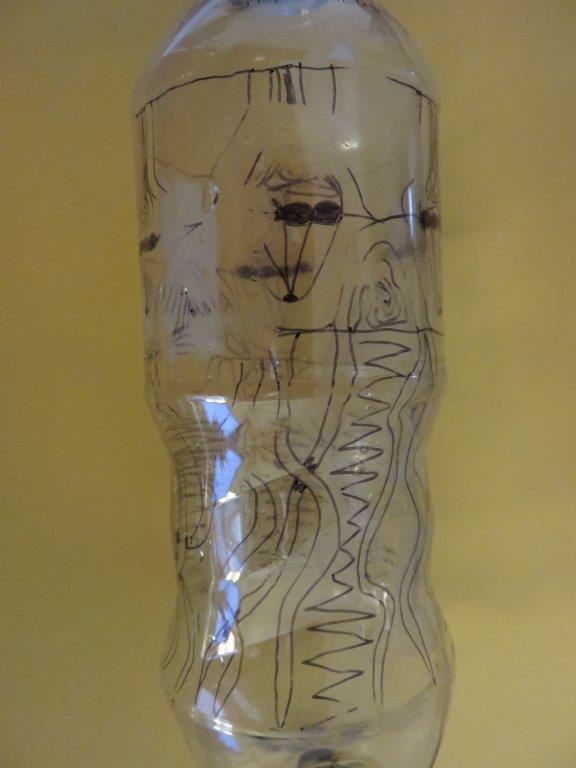
I am enjoying the colored pencils even though the patterns are made with the Micron pen.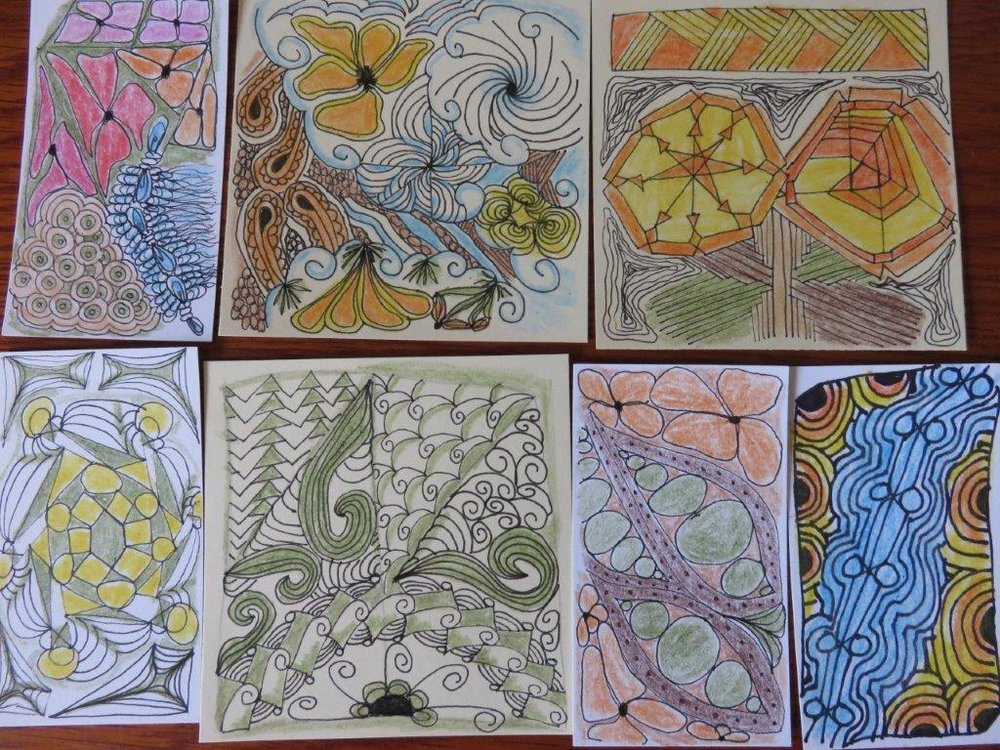
I find myself using more open patterns so that I have spaces to add color. The group below includes a test of the Sharpie on a strip of plastic…before I used it on the soft drink bottles.
I like the flower fillers!
The group of tiles without color below is from when I was traveling. For some reason – I reverted to more traditional tiles while ‘on the road.’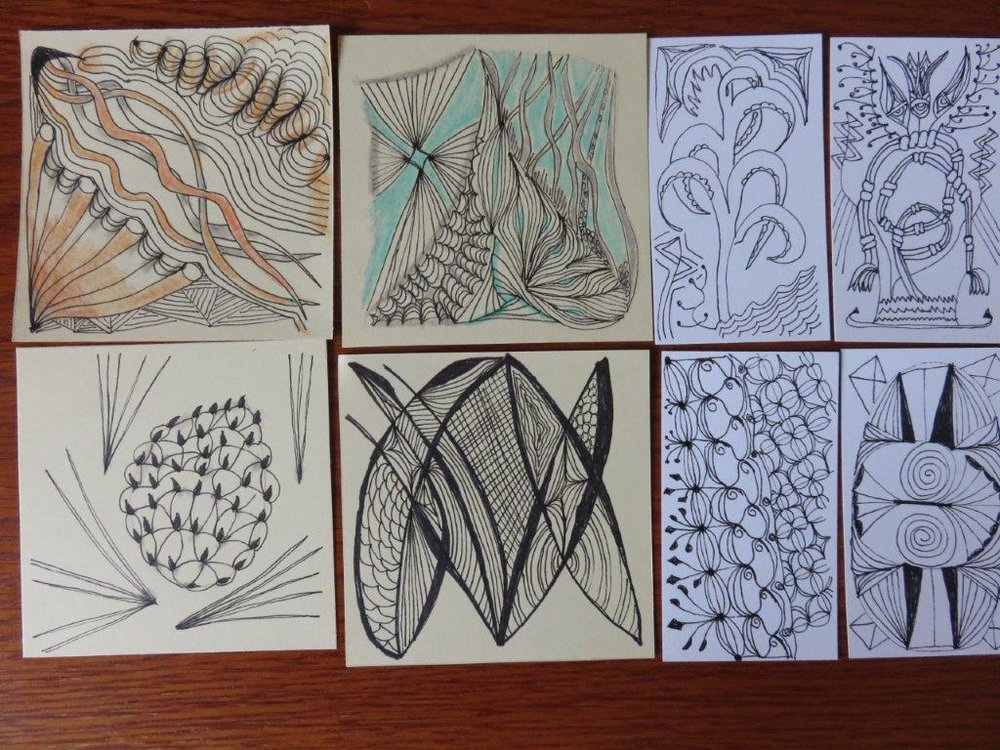
Sometimes I use only one color…and in areas that I would have done shading.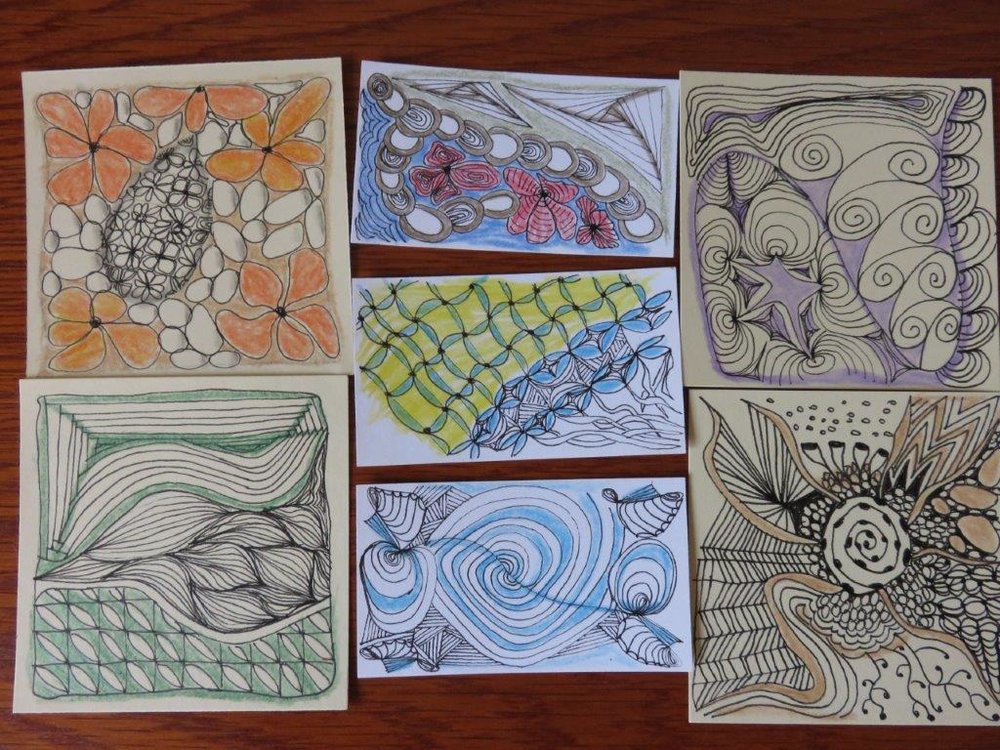
Sometimes I think – after the fact – of themes for tiles…like the sea (upper left) or jewels and scarves (upper middle). I decided to start naming the tiles.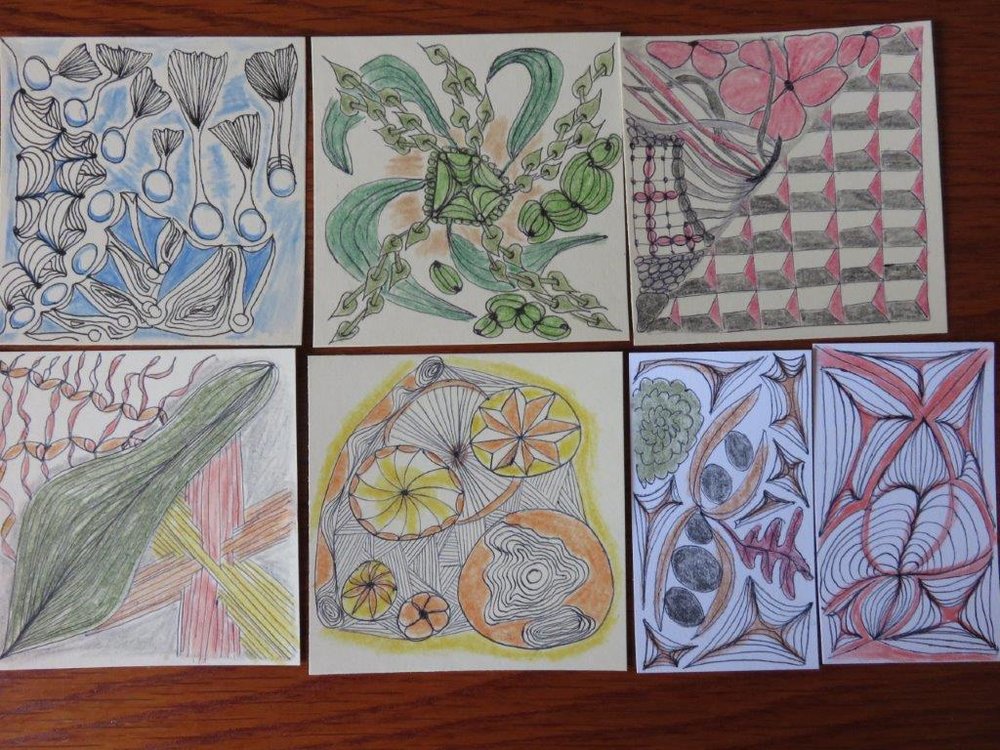
The names for this batch (starting at the upper left and moving to the right…then lower left and right): Opera house, Space I, D flower, Deed pods, Tri-red, D flower 2, 2015. The last one was an experiment on the coaster material to hang on the tree.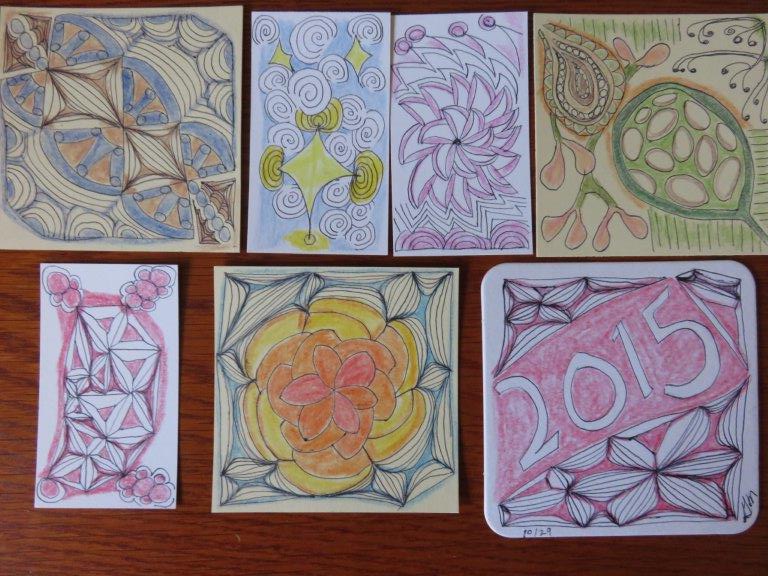
Below are three more with potential to hang on the tree. I started using a red Sharpie. I like the color but the lines are very fat! The lower right is a Zentangle with my name in hieroglyphs (one of the activities in the Coursera course on Ancient Egypt)…and I did auras around it to make a cartouche.
--
The Zentangle® Method is an easy-to-learn, relaxing, and fun way to create beautiful images by drawing structured patterns. It was created by Rick Roberts and Maria Thomas. "Zentangle" is a registered trademark of Zentangle, Inc. Learn more at zentangle.com.
